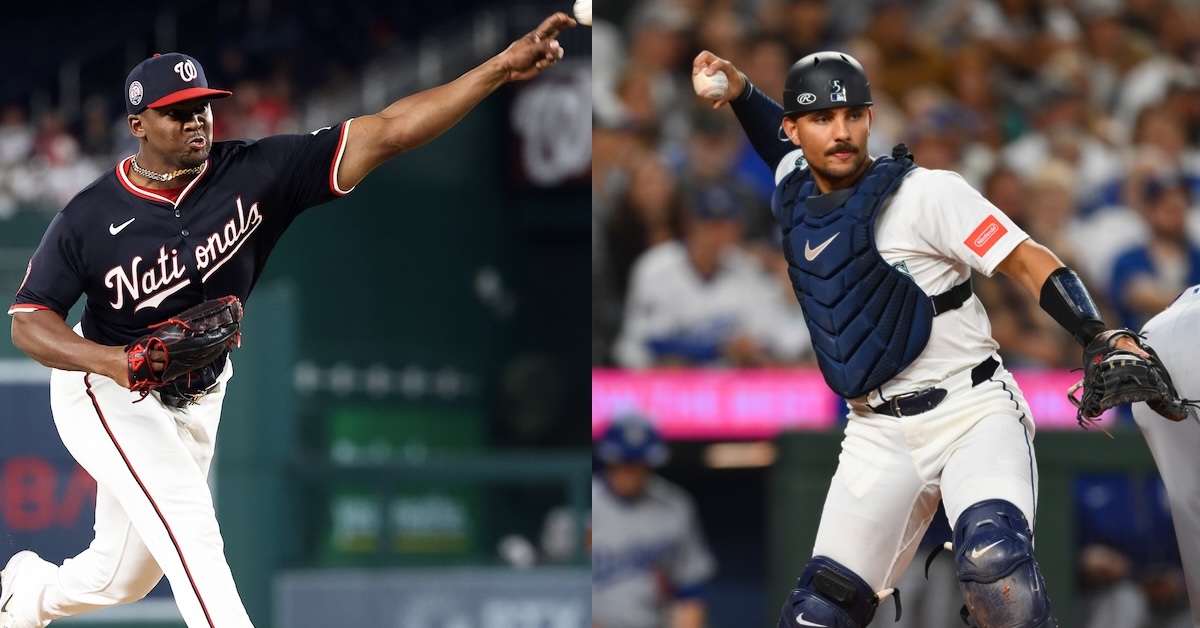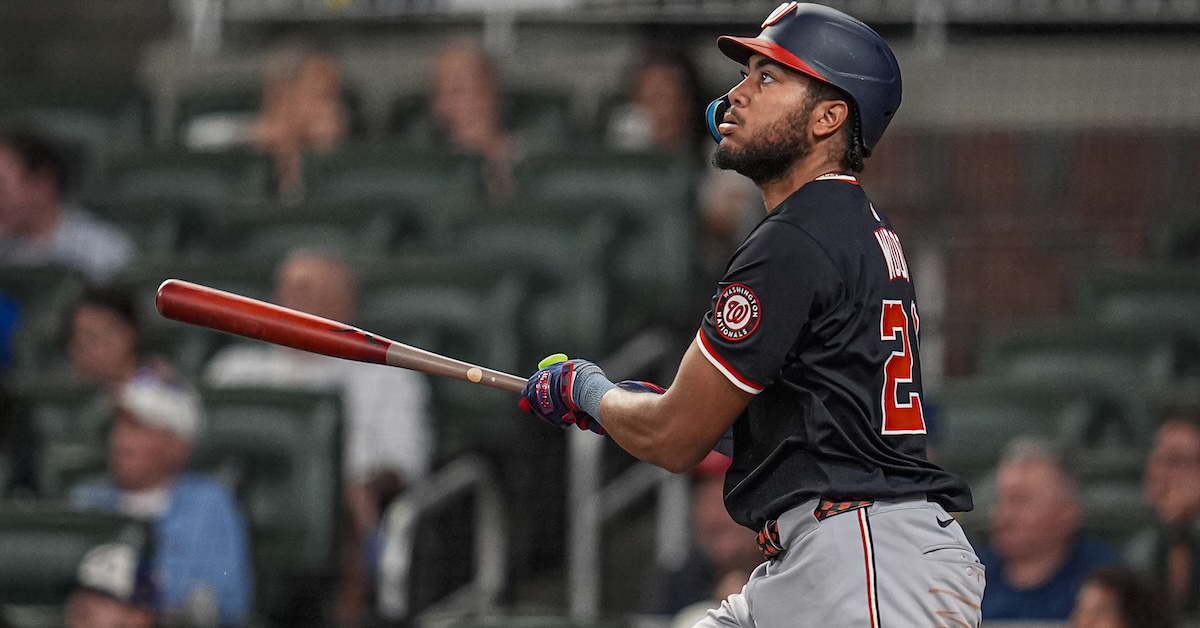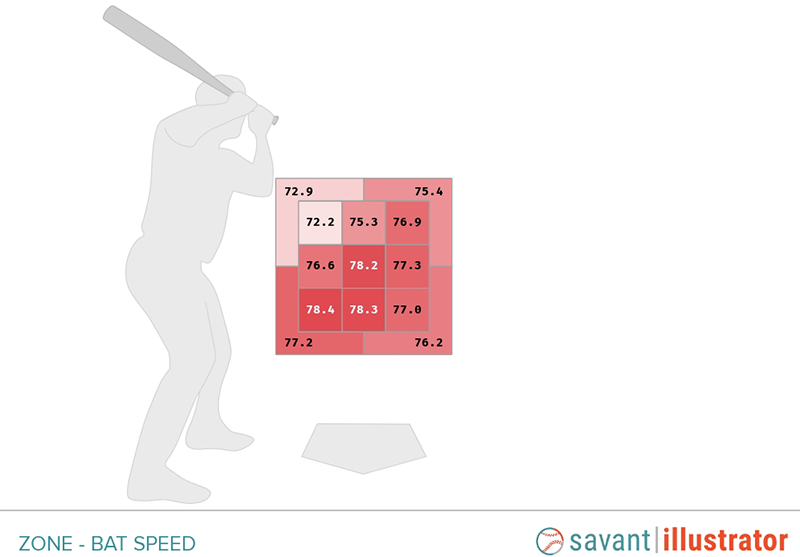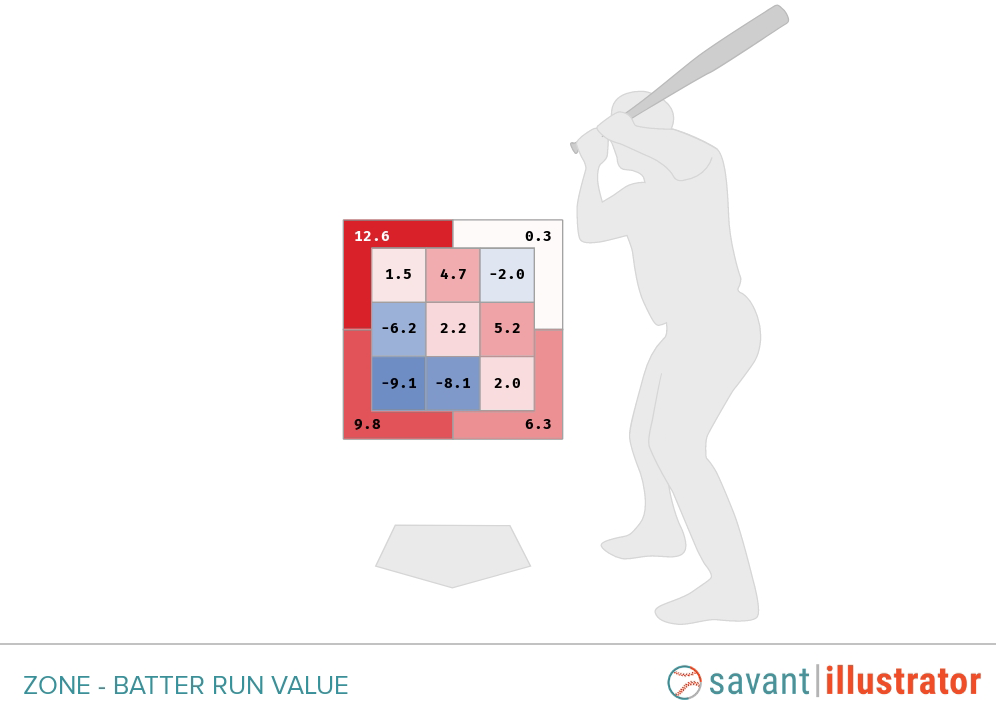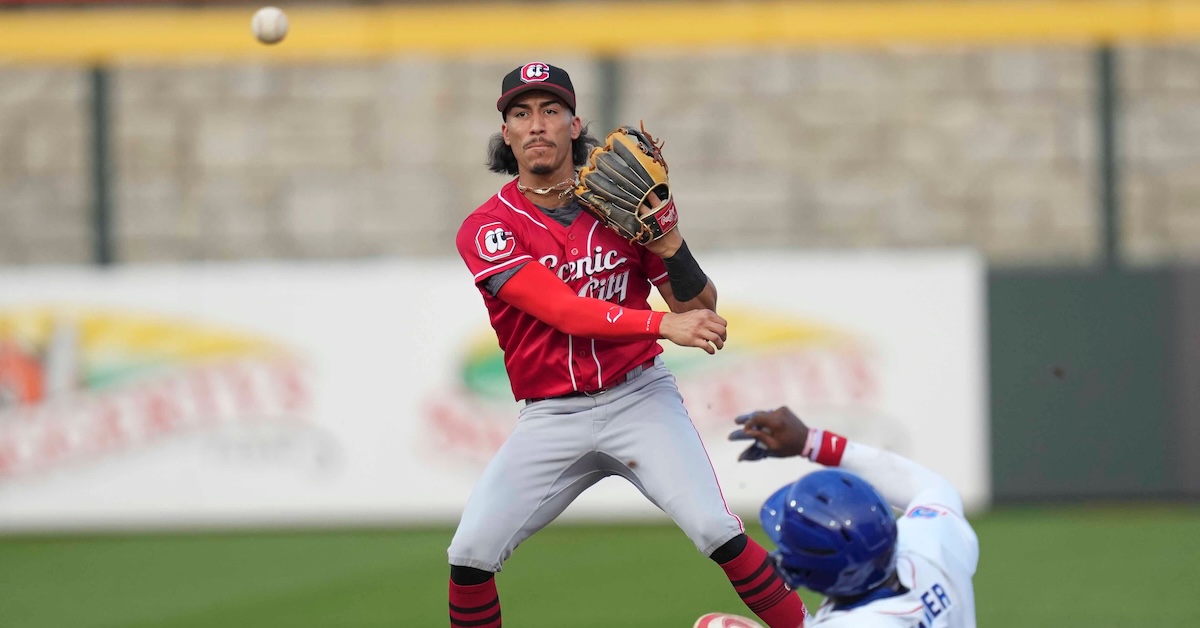Direct links to applications (please see job details below):
Minor League Affiliate Pitching Coach
Minor League Affiliate Defensive Coach
Minor League Affiliate Hitting Coach
Coordinator, Minor League Hitting (Upper Level)
Major League Dietitian
Minor League Strength & Conditioning Coach
Our Vision
To become baseball’s highest performing organization — defined by our relentless pursuit of excellence, strengthened by our connection, and fueled by our positive energy.
Our Core Values
- Joy. We want to be around people that like to have fun. We remain optimistic through the ups and downs, we enjoy the process, and we share in something bigger than ourselves.
- Humility. We don’t have all the answers. We lead with curiosity, listen generously, and seek growth from every experience — especially the tough ones. We have gotten over ourselves.
- Integrity. We do the right thing, even when it’s hard. We act with honesty, accountability, and respect for our teammates and ourselves. We treat the custodian like the king.
- Competitiveness. We embrace challenges and thrive in high-stakes environments. We prepare relentlessly. We are energized by the idea of keeping score.
Minor League Affiliate Pitching Coach
Position Summary
The Washington Nationals are seeking passionate and innovative minor league pitching coaches to join in creating a world-class pitching pipeline for the 2026 season. This is a uniformed position that will report to and work closely with the Pitching Coordinator, Director of Pitching, PD leadership, and appropriate stakeholders to develop and implement cross-departmental, individualized player performance plans throughout the season.
Ideal candidates embody our core values (joy, humility, integrity, and competitiveness) and are highly motivated, with a proactive and creative growth mindset.
Primary Responsibilities
- Collaborate with Pitching Coordinator, Director of Pitching, and other support staff to create and implement player-specific pitching improvement plans.
- Collaborate with affiliate medical and S&C staff to carry out and execute player plan goals.
- Implement dynamic pitching practice environments and assist field staff with daily on-field practice as needed.
- Track player pitching performance and provide data-driven insights using baseball technology and other internal analytical tools.
- Lead pitching player performance meetings.
- Help prepare and implement daily pitching game plans and opposing hitter advance reports.
- Track relevant player progress through internal note-taking structure and execute a world-class transition process, as players move from level to level.
Qualifications
- Detail-oriented with a strong ability to create programming and practice settings that promote goals of the pitching department.
- Desire to learn, grow, and develop personally and professionally in alignment with organizational values and philosophies.
- Demonstrated ability to communicate complex data-driven concepts to players in an easily understood, actionable manner.
- Prior experience coaching, playing, or working in an innovative baseball performance setting is preferred.
- Experience with baseball technologies and video/biomechanical analysis preferred.
- Bilingual (English/Spanish) preferred.
Compensation:
The projected annual salary range for this contracted position is $55,000-$75,000 per year. Actual pay is based on several factors, including but not limited to the applicant’s: qualifications, skills, expertise, education/training, certifications, and other organization requirements. Starting salaries for new employees are frequently not at the top of the applicable salary range.
Benefits
The Nationals offer a competitive and comprehensive benefits package that presently includes:
- Medical, dental, vision, life and AD&D insurance
- Short- and long-term disability insurance
- Flexible spending accounts
- 401(k) and pension plan
- Access to complimentary tickets to Nationals home games
- Employee discounts
- Free onsite fitness center
Equal Opportunity Employer:
The Nationals are dedicated to offering equal employment and advancement opportunities to all individuals regardless of their race, color, religion, national origin, sex, age, marital status, personal appearance, sexual orientation, gender identity or expression, family responsibilities, matriculation, political affiliation, genetic information, disability, or any other protected characteristic under applicable law.
To Apply
To apply, please follow this link.
Minor League Affiliate Defensive Coach
Position Summary
The Washington Nationals are seeking passionate and innovative minor league defensive coaches to join in creating a world-class player development pipeline. This is a uniformed position that will report to and work closely with the leadership in the Defense, Baserunning, and Game Play Department to develop and implement individualized defensive improvement plans throughout the season. Affiliate defensive coaches will evaluate performance, create effective programming, and execute championship caliber training environments while working closely with on-site support staff (S&C, medical, etc.) to carry out cross-departmental player plan goals. Ideal candidates embody our core values (joy, humility, integrity, and competitiveness) and are highly motivated, with a proactive and creative growth mindset.
Primary Responsibilities
- Collaborate with defensive coordinators and other support staff to evaluate performance, create programming, and implement player-specific defense improvement plans.
- Execute world-class training environments at the affiliate level in alignment with organizational defensive philosophies.
- Communicate player performance and training progress with appropriate stakeholders, including players and leadership.
- Prepare daily and weekly defensive positioning and game planning.
- Track player defensive performance and provide data-driven insights using baseball technology and other internal analytical tools.
- Assist affiliate staff with additional daily practice goals, as needed.
Qualifications
- Detail-oriented with a strong ability to evaluate performance, create programming and execute training.
- Desire to learn, grow, and develop personally and professionally in alignment with organizational values and philosophies.
- Demonstrated ability to communicate complex data-driven concepts to players in an easily understood, actionable manner.
- Prior experience coaching, playing, or working in an innovative baseball performance setting is preferred.
- Experience with baseball technologies and advanced defensive metrics preferred.
- Bilingual (English/Spanish) preferred.
Compensation:
The projected annual salary range for this contracted position is $55,000-$75,000 per year. Actual pay is based on several factors, including but not limited to the applicant’s: qualifications, skills, expertise, education/training, certifications, and other organization requirements. Starting salaries for new employees are frequently not at the top of the applicable salary range.
Benefits:
The Nationals offer a competitive and comprehensive benefits package that presently includes:
- Medical, dental, vision, life and AD&D insurance
- Short- and long-term disability insurance
- Flexible spending accounts
- 401(k) and pension plan
- Access to complimentary tickets to Nationals home games
- Employee discounts
- Free onsite fitness center
Equal Opportunity Employer:
The Nationals are dedicated to offering equal employment and advancement opportunities to all individuals regardless of their race, color, religion, national origin, sex, age, marital status, personal appearance, sexual orientation, gender identity or expression, family responsibilities, matriculation, political affiliation, genetic information, disability, or any other protected characteristic under applicable law.
To Apply
To apply, please follow this link.
Minor League Affiliate Hitting Coach
Position Summary
The Washington Nationals are seeking passionate and innovative minor league hitting coaches to join a world-class hitting pipeline for the 2026 season. This is a uniformed position that will report to and work closely with the Hitting Coordinator, Director of Hitting, PD leadership, and relevant stakeholders to develop and implement individualized, cross departmental player performance plans throughout the season.
Ideal candidates embody our core values (joy, humility, integrity, and competitiveness) and are highly motivated, with a proactive and creative growth mindset.
Primary Responsibilities
- Collaborate with Hitting Coordinator and Director of Hitting to create and implement player-specific offensive improvement plans.
- Collaborate with affiliate S&C and medical staff to carry out and execute player plan goals.
- Execute daily hitting practice environments and assist field staff with daily on-field practice goals.
- Track player offensive progress and provide data-driven insights using baseball technology and other internal analytical tools.
- Help prepare and implement daily offensive game plans and advance reports.
- Lead in-season hitting player performance meetings.
- Track relevant player progress through internal note-taking structure and execute a world-class transition process, as players move from level to level.
Qualifications
- Detail-oriented with a strong ability to create programming and practice settings that promote goals of the hitting department.
- Desire to learn, grow, and develop personally and professionally in alignment with organizational values and philosophies.
- Demonstrated ability to communicate complex data-driven concepts to players in an easily understood, actionable manner.
- Prior experience coaching, playing, or working in an innovative baseball performance setting is preferred.
- Experience with baseball technologies and video/biomechanical analysis preferred.
- Bilingual (English/Spanish) preferred.
Compensation:
The projected annual salary range for this contracted position is $55,000-$75,000 per year. Actual pay is based on several factors, including but not limited to the applicant’s: qualifications, skills, expertise, education/training, certifications, and other organization requirements. Starting salaries for new employees are frequently not at the top of the applicable salary range.
Benefits:
The Nationals offer a competitive and comprehensive benefits package that presently includes:
- Medical, dental, vision, life and AD&D insurance
- Short- and long-term disability insurance
- Flexible spending accounts
- 401(k) and pension plan
- Access to complimentary tickets to Nationals home games
- Employee discounts
- Free onsite fitness center
Equal Opportunity Employer:
The Nationals are dedicated to offering equal employment and advancement opportunities to all individuals regardless of their race, color, religion, national origin, sex, age, marital status, personal appearance, sexual orientation, gender identity or expression, family responsibilities, matriculation, political affiliation, genetic information, disability, or any other protected characteristic under applicable law.
To Apply
To apply, please follow this link.
Coordinator, Minor League Hitting (Upper Level)
Position Summary
The Washington Nationals are seeking a minor league hitting coordinator to join in creating a world-class hitting pipeline. The hitting coordinator will report to and work closely with the Director of Hitting and PD leadership to implement a cross-discipline, strategic philosophy to build a sustainable system of player and staff development. This position will also work closely with affiliate hitting coaches to develop individualized player performance plans. Ideal candidates embody our core values (joy, humility, integrity, and competitiveness) and are highly motivated, with a proactive and creative growth mindset.
This is a roving position that will be focused on the upper levels (AAA, AA, A+) and include travel to respective affiliates throughout the season.
Primary Responsibilities
- Oversee implementation of organizational hitting philosophies at the upper minor league levels (AAA, AA, A+).
- Communicate regularly with affiliate hitting coaches to provide support, feedback, and staff development opportunities throughout the season.
- Collaborate with Director of Hitting, hitting coaches, and support staff to create player-specific offensive improvement plans.
- Collaborate with medical and S&C departments to ensure the execution of rehabilitation and return-to-play programs.
- Track player hitting performance and provide data-driven insights using baseball technology and other analytical tools.
- Ensure healthy communication to execute a world-class transition process as players move from level to level.
Qualifications
- Detail-oriented with a strong ability to create inventive programming and practice design.
- Proven experience organizing and connecting a cohesive team that embodies the organization’s values and vision.
- Demonstrated ability to lead and communicate clearly and effectively, challenging and empowering teammates to grow personally and professionally.
- Strong decision-making skills and track record applying analytical ideas and data-driven concepts within baseball.
- Prior experience coaching or leading in an innovative baseball performance setting.
Compensation:
The projected annual salary range for this contracted position is $100,000 – $125,000 per year. Actual pay is based on several factors, including but not limited to the applicant’s: qualifications, skills, expertise, education/training, certifications, and other organization requirements. Starting salaries for new employees are frequently not at the top of the applicable salary range.
Benefits:
The Nationals offer a competitive and comprehensive benefits package that presently includes:
- Medical, dental, vision, life and AD&D insurance
- Short- and long-term disability insurance
- Flexible spending accounts
- 401(k) and pension plan
- Access to complimentary tickets to Nationals home games
- Employee discounts
- Free onsite fitness center
Equal Opportunity Employer:
The Nationals are dedicated to offering equal employment and advancement opportunities to all individuals regardless of their race, color, religion, national origin, sex, age, marital status, personal appearance, sexual orientation, gender identity or expression, family responsibilities, matriculation, political affiliation, genetic information, disability, or any other protected characteristic under applicable law.
To Apply
To apply, please follow this link.
Dietitian, Major League
Position Summary
The Major League Nutritionist will serve as the architect of the Nationals’ nutritional strategy at the Major League level. This individual will ensure that all players and staff have access to world-class nutrition resources that optimize performance, recovery, and health. The role includes developing individualized nutrition plans, coordinating daily fueling and hydration logistics, and aligning nutrition objectives with the goals of other departments, including Coaching, Strength & Conditioning, Player Development, and Medical.
The position will travel approximately 50% of the time with the Major League team and maintain consistent communication with internal staff, visiting clubhouses, vendors, and food service providers to ensure consistent, high-quality nutritional offerings at home and on the road.
The Nationals are a military-friendly organization actively recruiting veterans and spouses.
Primary Responsibilities
Alongside key stakeholders, lead the development of a world-class nutrition infrastructure, including:
- Design and oversee individualized, evidence-based nutrition and hydration plans and testing protocols for all Major League players based on performance goals, body composition, and health needs.
- Coordinate day-to-day fueling operations for players and staff, including meals, snacks, and supplements at home and on the road.
- Work directly with the Major League strength & conditioning, coaching, and medical staffs to ensure nutrition plans align with physical, performance, and recovery objectives.
- Serve as the primary liaison to food vendors, visiting clubhouses, and hotel staff to ensure the Nationals’ standards for quality and nutrition are consistently met.
- Develop education programs for players and staff to reinforce the role of nutrition in performance, health, and recovery.
- Monitor player adherence to nutrition plans and collaborate with staff to evaluate outcomes and adjust strategies as needed.
- Manage inventory and budget for nutritional supplies, ensuring efficient use of resources while maintaining elite standards.
- Collaborate with Minor League Nutrition and Performance staff to ensure consistency in nutrition philosophy and transition plans for developing players.
Qualifications
- Bachelor’s degree in nutrition, Dietetics, Exercise Science, or related field (Master’s preferred).
- Registered Dietitian (RD/RDN) credential required; CSSD certification preferred.
- Servsafe certification and ISAK certification preferred or interest in obtaining
- Minimum 3 years of experience in elite athletics, preferably MLB or professional sport setting.
- Strong interpersonal and communication skills, with ability to collaborate effectively across departments.
- Ability to communicate in Spanish preferred.
- Proven ability to manage travel schedules, vendor relationships, and operational logistics.
- Deep understanding of performance nutrition, recovery strategies, and the demands of a professional baseball season.
Personal Qualities:
- Detail-oriented and highly organized.
- Strong communicator capable of earning trust and buy-in from players and staff.
- Flexible and proactive problem solver, able to adapt quickly to the demands of the season.
- Passionate about helping athletes reach their peak potential through science-based nutritional support.
Compensation:
The projected annual salary range for this contracted position is $105,000 to $125,000 per year. Actual pay is based on several factors, including but not limited to the applicant’s: qualifications, skills, expertise, education/training, certifications, and other organization requirements. Starting salaries for new employees are frequently not at the top of the applicable salary range.
Benefits:
The Nationals offer a competitive and comprehensive benefits package that presently includes:
- Medical, dental, vision, life and AD&D insurance
- Short- and long-term disability insurance
- Flexible spending accounts
- 401(k) and pension plan
- Access to complimentary tickets to Nationals home games
- Employee discounts
- Free onsite fitness center
Equal Opportunity Employer:
The Nationals are dedicated to offering equal employment and advancement opportunities to all individuals regardless of their race, color, religion, national origin, sex, age, marital status, personal appearance, sexual orientation, gender identity or expression, family responsibilities, matriculation, political affiliation, genetic information, disability, or any other protected characteristic under applicable law.
To Apply
To apply, please follow this link.
Coach, Minor League Strength & Conditioning
Position Summary
The Washington Nationals are looking for a Strength and Conditioning Coach to serve one of our affiliate teams for the 2026 season. Responsibilities of this position will include assisting in the creation and implementation of the Washington Nationals Minor League Strength and Conditioning Program during Spring Training of 2026 and at their assigned affiliate for the 2026 minor league season.
Primary Responsibilities
- Implementation of the organization’s strength and conditioning program
- Implementing and supervising the Nationals Strength & Conditioning program at their assigned affiliate the 2026 championship season.
- Collection, organization, and dissemination of workload data collected both in-game and practice.
- Daily, Weekly, and Monthly reporting on players training data and progress
- Communication between departments regarding player assessments and evaluations.
- Assist with nutritional needs for their assigned affiliate.
- Contacting players as well as assisting with their programs held over the off-season.
Qualifications
Requirements:
- Bachelor’s Degree in Exercise Science, Kinesiology, or Related Field
- Certification through the NSCA (CSCS)
- CPR/AED/First Aid
- Vehicle and Laptop computer
Preferred:
- Master’s Degree in Exercise Science, Kinesiology, or Related Field
- Experience using a variety of sport science devices such as 1080 Motion Devices, Vald Ecosystem, GymAware, etc.
- 2 years of strength and conditioning experience (baseball experience preferred)
- Bilingual (Spanish)
- Willingness to learn and continue their education within and beyond the Strength and Conditioning field
Compensation:
- Salary will be based on qualifications and experience
- Room & Board during Spring Training
- In-season housing allowance and meal money on road trips
- Health benefits and a 401k package are provided
- Airfare or mileage reimbursement will be provided to Spring Training and their assigned affiliate
Application Information
Submission Instructions: Please email a single PDF copy of your cover letter, resume, and 3 references to Gabe Torres at gabe.torres@nationals.com and Shane Hill at Shane.Hill@nationals.com
Original Posting:
Please follow this link.
The content in this posting was created and provided solely by the Washington Nationals.
